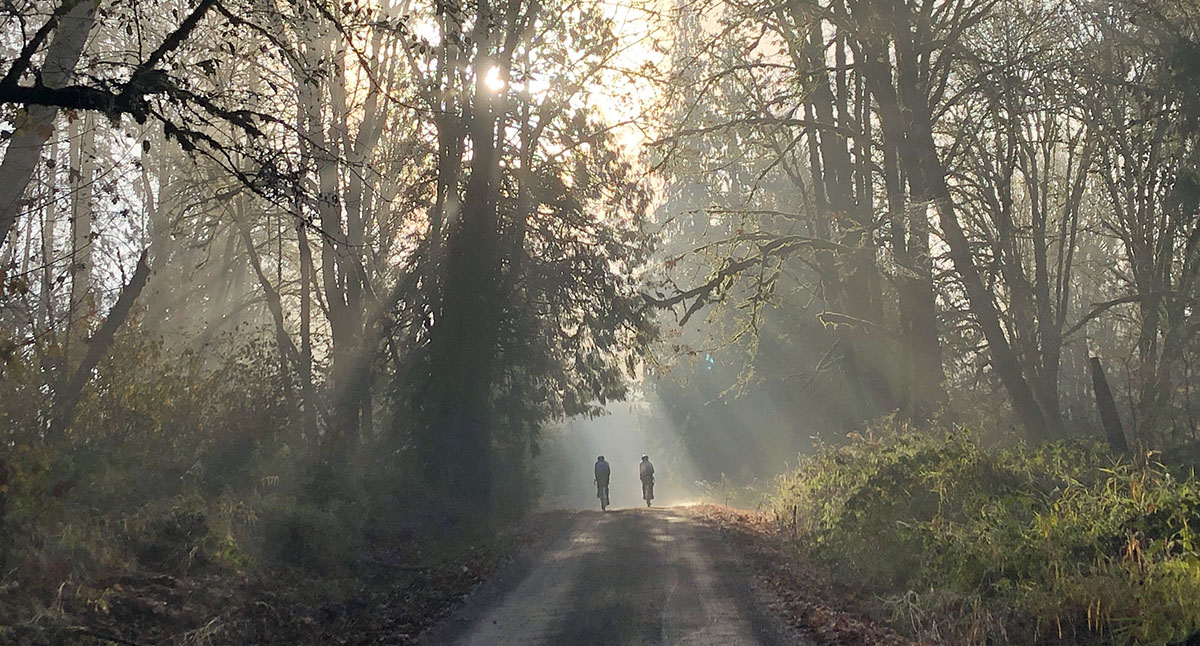All-Road Rides from Paved to ‘Cross
The promise of the all-road bike: racing bike speed with the go-anywhere ability of wide tires. It’s the biggest revolution in cycling in almost a century, and it has changed how we ride. These days, our spirited road rides often include some gravel or even single-track. It adds variety to the ride, and it allows us to avoid busy roads that aren’t much fun. And the nice part is that we’re not giving up anything on the paved portions of the ride.
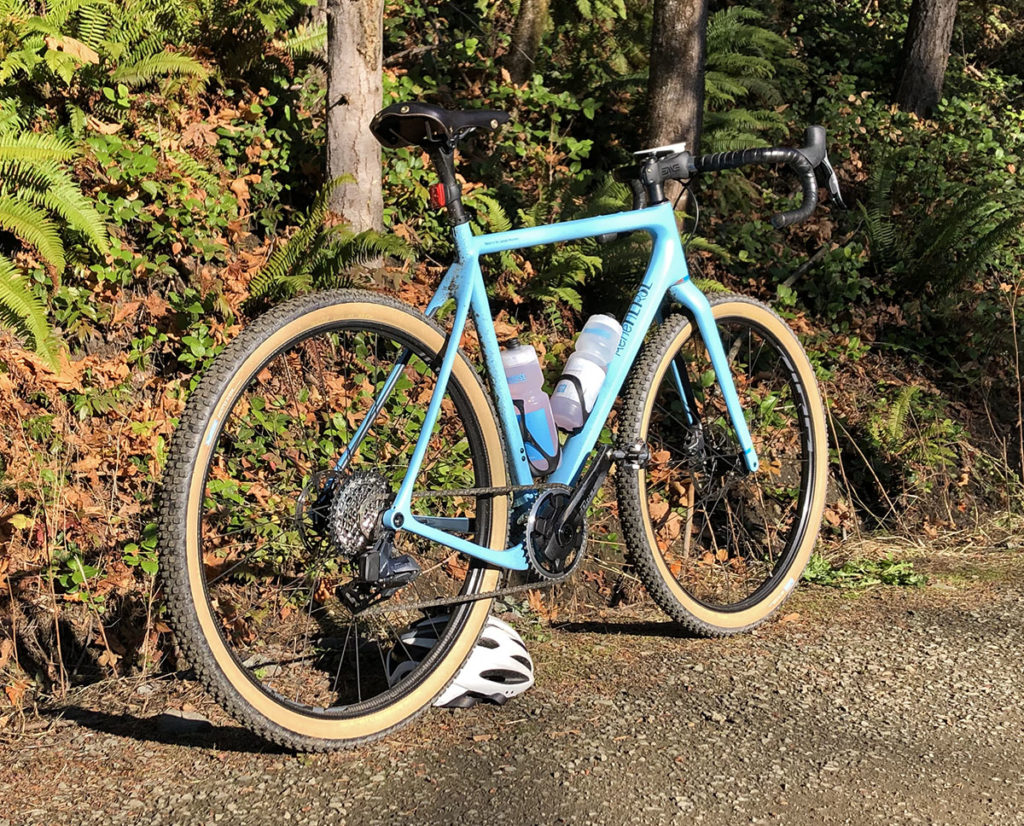
My new OPEN × Rene Herse is exactly what we had in mind when we coined the term ‘all-road bike’ way back in 2006: a modern race bike with ultra-wide tires. Does it really live up to its promise? I was eager to find out. In any case, when you have a new bike, you want to ride it—everywhere and all the time. And so I’ve been riding it, aided by the unusually dry autumn weather in Seattle.
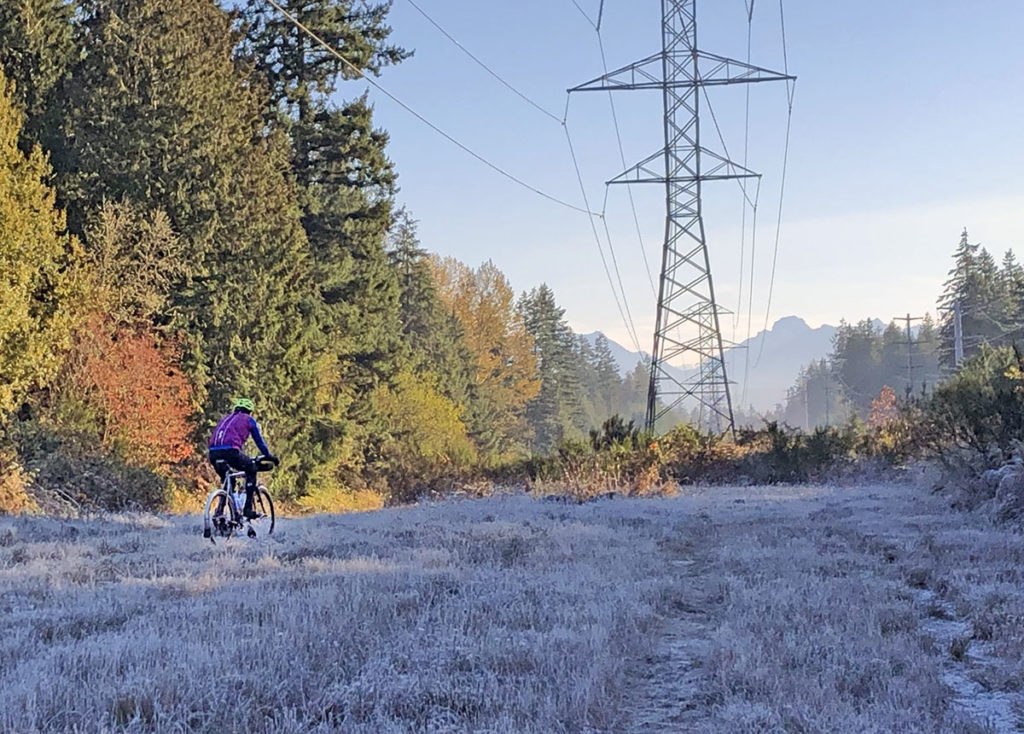
Fast-paced road ride
The BQ Team met on a frosty morning to head into the foothills of the Cascade Mountains. Leaving town on paved trails and roads, we soon connected to the Powerline Trail. It’s a rough and steep gravel road that follows a powerline over hill and dale. You’d expect the OPEN to be in its element here, and it was. But so were my friends’ randonneur bikes.
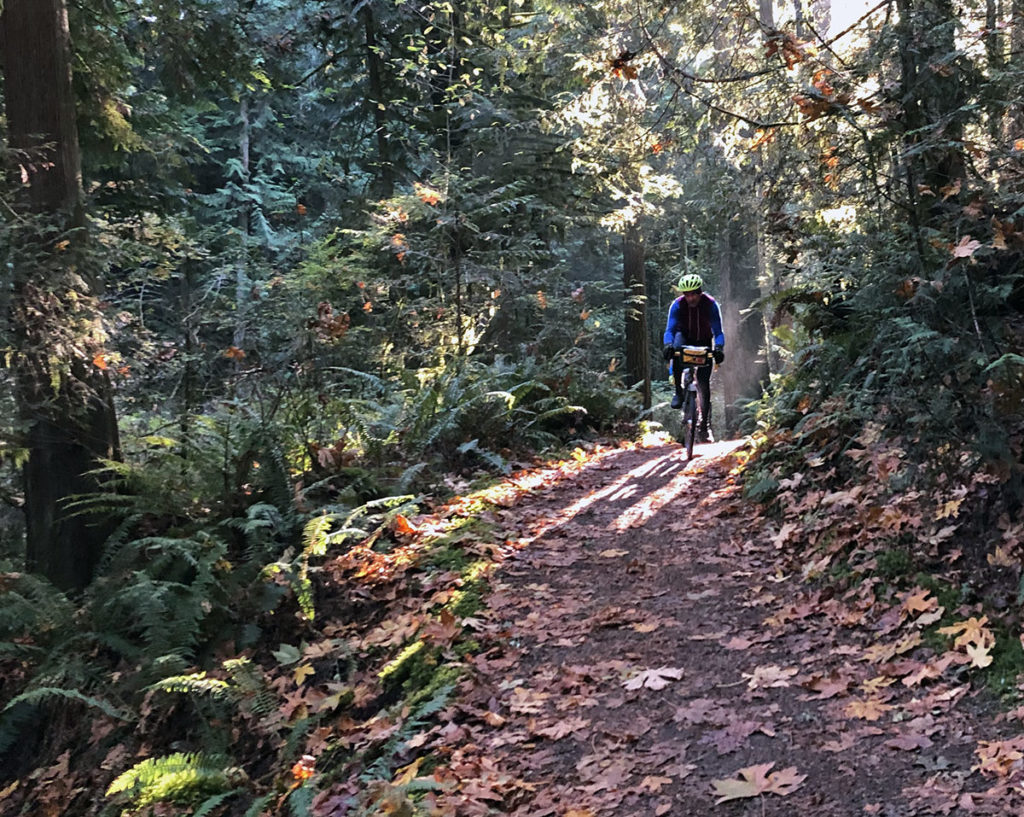
A short detour took us in the forest on trails that we never would have considered as part of a fast-paced road ride in the past. But these days, why not?
Then we were on quiet paved backroads. On-the-bike photography is difficult when speeds are high! (We were out for a ride, not a photoshoot!) Did I wish for narrower tires, or smoother tread than my 650B x 48 Juniper Ridge knobbies? Definitely not from a performance perspective. Our carefully controlled tests have shown that wider tires aren’t slower, and that our dual-purpose knobbies roll as fast as our smooth tires. And I certainly had no trouble keeping up with my friends.
Once in a while, I wished for noise canceling—the Junipers don’t have that yet—but even our older knobbies are quiet enough that they don’t intrude into the conversation. Because even at a spirited pace, there’s plenty of banter, especially when we haven’t seen each other in a few weeks.
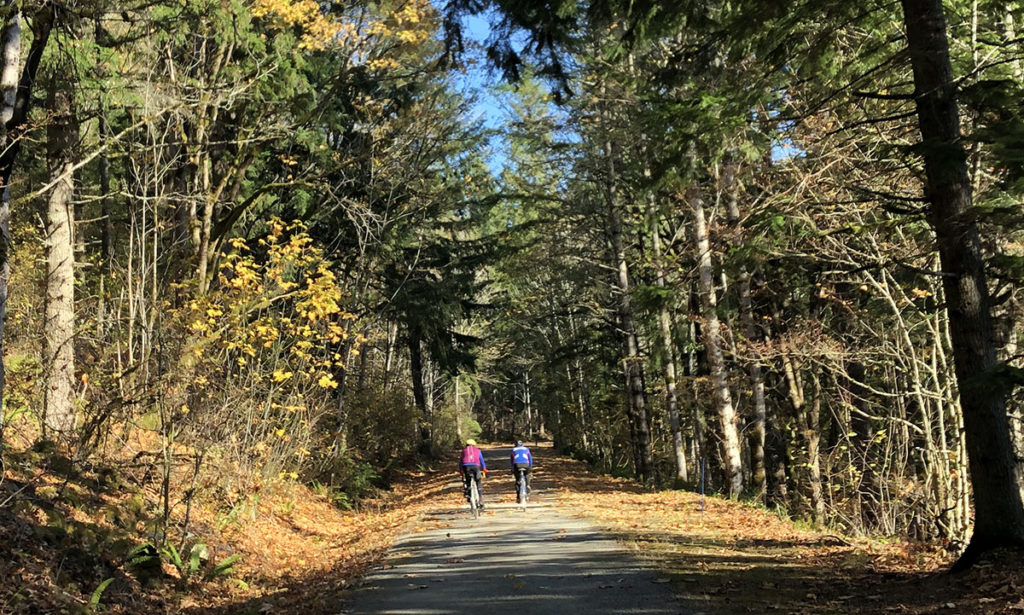
After a cafe stop in Carnation, we continued on the Snoqualmie Valley Trail. That’s probably the hardest part of the ride, because the trail climbs on an imperceptible, constant grade. The pace was high, because it felt like we were riding on a flat road, but we were in fact climbing. The OPEN ‘planes’ exceptionally well for me, and even though I didn’t look forward to this section—I prefer steeper climbs where I can see the results of my work—it passed quickly and without struggle.
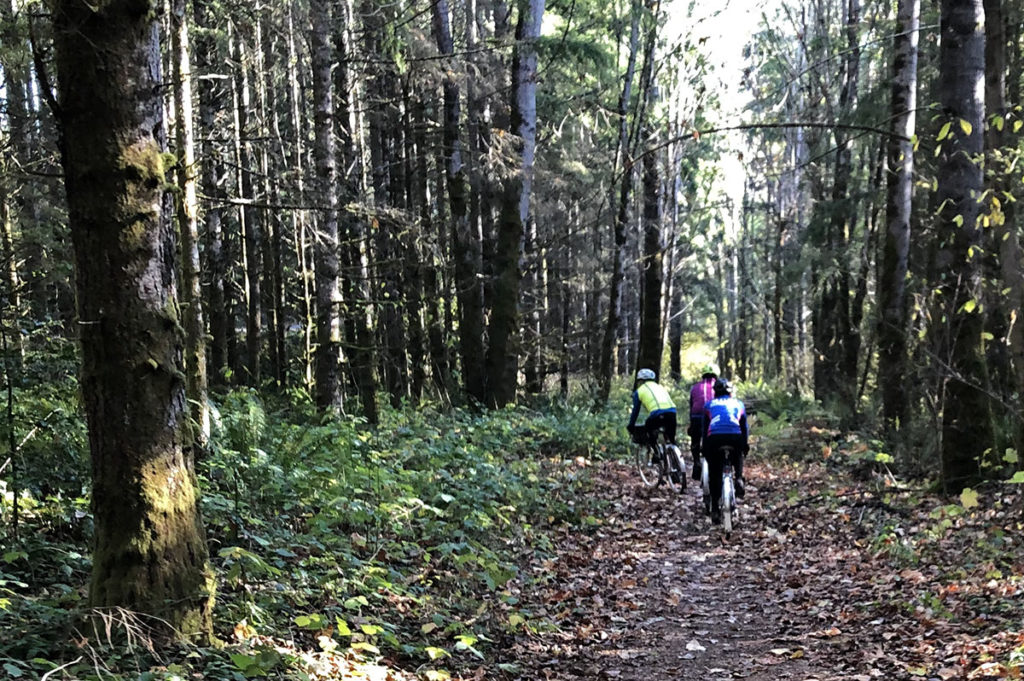
The trail ends suddenly, and there’s a short piece of single-track that brought us to the road into Snoqualmie. We continued at a brisk pace, so there are no photos from the vertiginous descent from the Snoqualmie Highlands. The road was still a bit slippery, and it wasn’t a time to pull out my cell phone for photos.
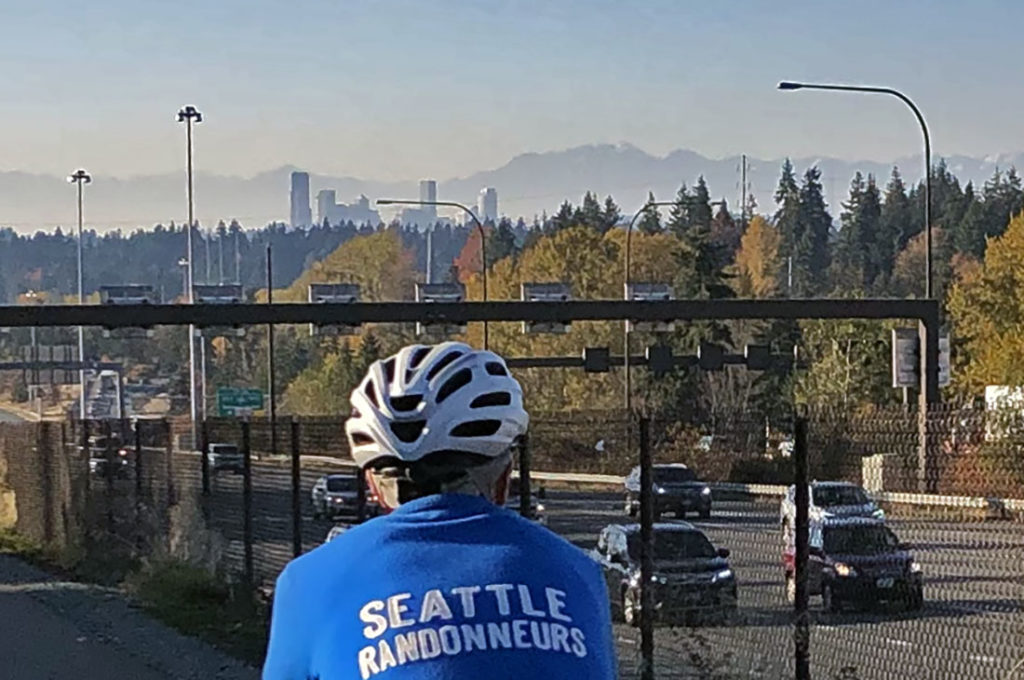
Seattle is a busy city, but it has many ways to get around with minimal traffic. This new trail along I-90 eliminates one of the last unpleasant sections of this ride. We had made such good time that the sun was still high in the sky as we approached the finish of our ride. Coming over this hill and seeing downtown with the Olympic Mountains in the background is always a highlight. It doesn’t look as spectacular in the photo, because the camera doesn’t zoom in like our eyes do. (To capture the effect, I’d have to perch high on the hillside with a long telephoto lens.)
This 100-mile ride is pretty typical for how we ride our all-road bikes these days: everything from single-track and rough gravel to twisty and fast paved descents. In short everything we love about cycling. And the OPEN was the perfect tool for this. So were the steel rando bikes of my friends.
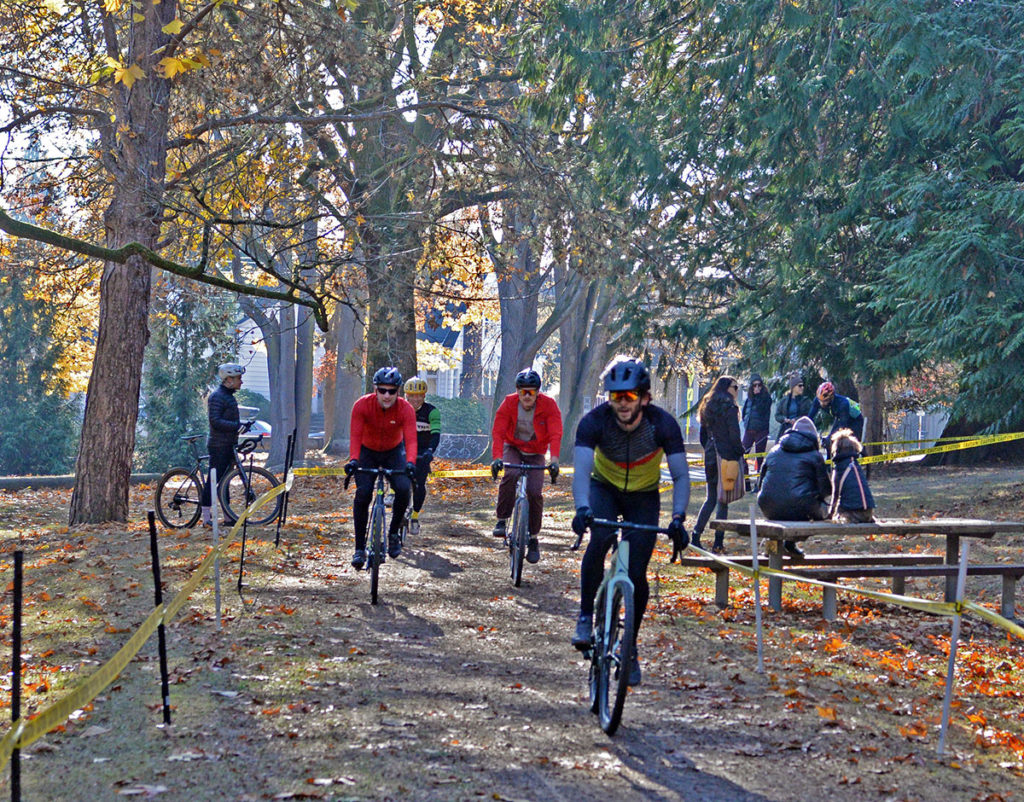
Cyclocross
It’s been a busy year, and I had to choose between going to Arkansas for the High Country Race or racing cyclocross this year. So my Alan ‘cross bike is languishing in the basement. On Saturday, I checked the race schedule and realized that my favorite race, in Woodland Park, was the following day. That’s just a short ride from my house, so I could race and still be home for lunch. Only problem: There was no time to overhaul the Alan and re-glue its tubular tires. What if I rode the OPEN?
My preparation consisted of removing the bottle cages and letting a little air out of the tires on Sunday morning. Then I rode across town to Woodland Park. It was another beautiful, sunny and chilly morning. Woodland Park is the finale of the Seattle ‘cross season. The leaders in the race series got to line up at the front. It all seemed quite serious, and here I was on a bike I’d never dismounted or lifted over a barrier! Of course, it’s not that serious, since we’re the lowest Category 4. None of us have pro contracts on the line—we’re out here to have fun. That’s why the organizers explicitly say that “All bikes are welcome.” Nobody cares that the UCI considers my 48 mm tires an unfair advantage and limits cyclocross bikes to 33 mm.
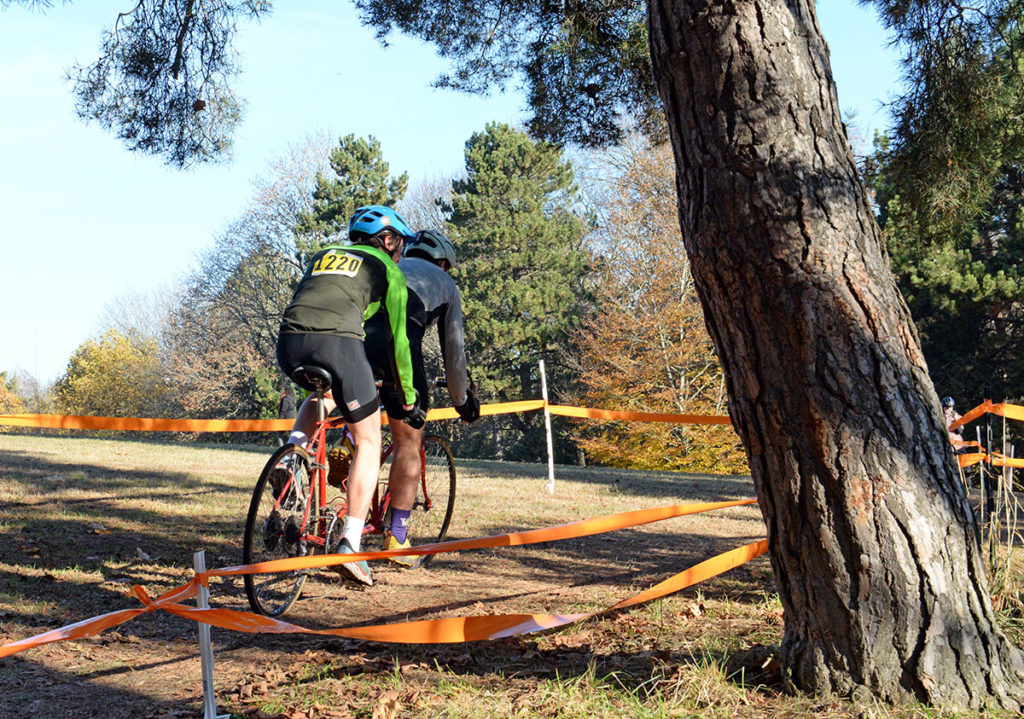
And fun it was. There was even a tandem. (Amazingly, they finished without any problems on what seemed to be UCI-legal tires, meaning less than 33 mm wide.) Cross has fallen a bit out of fashion, but that just means that the people who come are more genuine. There are still plenty of participants: Woodland Park saw more than 1000 racers. Most of them are out to do their best, and the racing is quite competitive at the front. It’s perhaps a bit like Marathon running, with no animosity between the faster and slower riders.
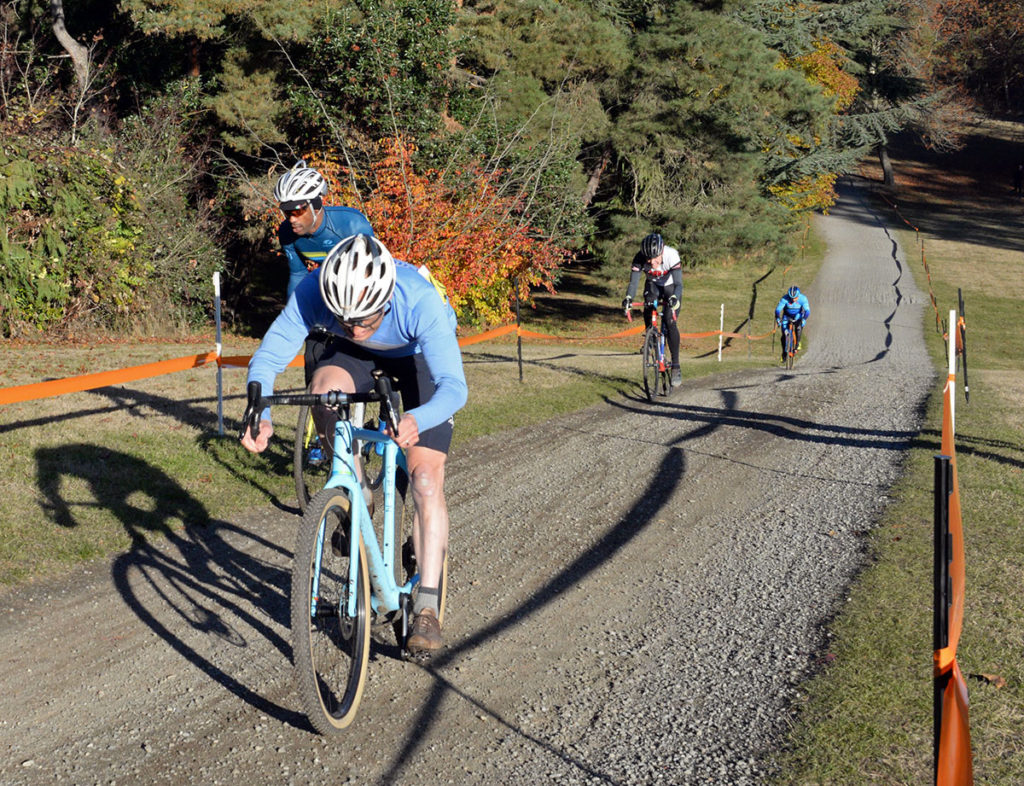
In my race, the pace was high from the start, but the OPEN held its own. Whenever the course went uphill—which was most of the time, since Woodland Park is on a hillside, the bike surged ahead. With several categories racing at the same time, it was impossible to keep track of where I was in the race, but it seemed that I passed more riders than passed me.
Cyclocross is very different from the rides I usually do. It’s so intense. For 30 minutes, it’s pedaling all-out most of the time, punctuated only by short rests during descents, where the twists and tight turns require full concentration. Since you do several laps of the course, you can hone your technique and fine-tune your approach to various parts of the course. It’s a great way to work on skills in a relatively safe setting. (Mud and forest soil is softer than gravel or pavement.)
Most of all, it’s incredibly fun! Woodland Park is the best course I’ve raced. It has a beautiful flow. It’s quite fast, so it puts a strong emphasis on bike handling skills. And it’s truly scenic. Especially on this autumn day with the leaves at their colorful best.
Dismounts are another reason I love ‘cross. It’s like ballet: Approach the barrier, swing leg over saddle, dismount exactly in the spot where two steps will get you over the first barrier, run, jump the second barrier, 3-4 more steps, swing leg over saddle, ride off. The OPEN’s weight distribution and sloping top tube make it a bit different to lift than my Alan, but the light weight makes it really easy to portage. I wish there were more dismounts—current rules allow only two per lap. Good technique means you’re carrying much speed across the barriers. It’s fun.
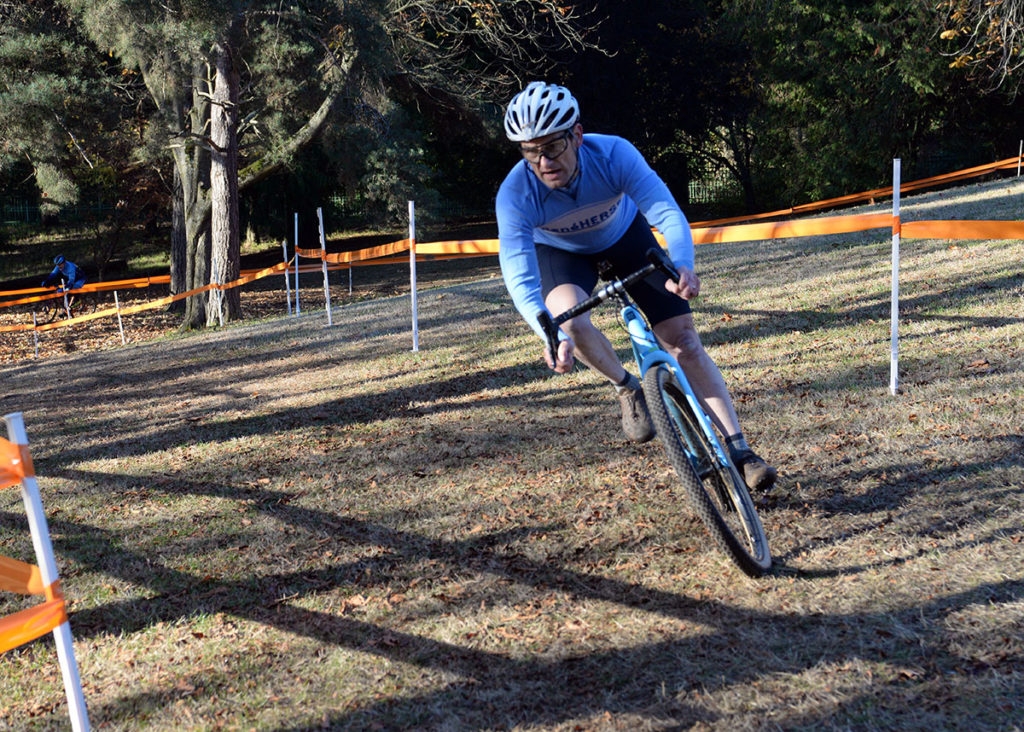
How did the OPEN do? I think the OPEN accelerates better than the Alan. It’s not the (small) weight difference, but the way the frame flexes. For the fast corners, the Alan’s low-trail geometry may be better, but for the tight twists, the OPEN’s extra wheel flop helped. I’m not sure which I prefer. The big tires were a huge asset on the bumpy ground, and the large knobs allowed me to take a short paved downhill section with a twisty S-bend at full speed. With so many downhill turns, it’s easy to carry too much speed and then slide more than is ideal, scrubbing off too much speed. It’s actually faster to enter the corners a little slower, but carry more speed and enter the following straight faster. It’s fun to perfect that with each lap. During the last lap, I finally felt I got it right on most of the course.
Braking on the loose surfaces, I wasn’t too fond of the disc brakes. Even though SRAM’s discs are less grabby than others I’ve tried, they were a bit hard to modulate when there was so little grip. The cantis of my Alan brake just as well on the loose surfaces, but they are more forgiving. The electronic shifting was nice, but realistically, it doesn’t make a difference. For riders who spend more time out of the saddle, it may be different, but I’ve never had trouble being in the right gear on my Alan. And when my drivetrain picked up a leaf and the chain skipped until the leaf was ground into the cassette, I was reminded that 12-speed drivetrains are more finicky than the 6-speed on my Alan. In a muddy race, I’d need bike changes every lap. Or ride a single-speed.
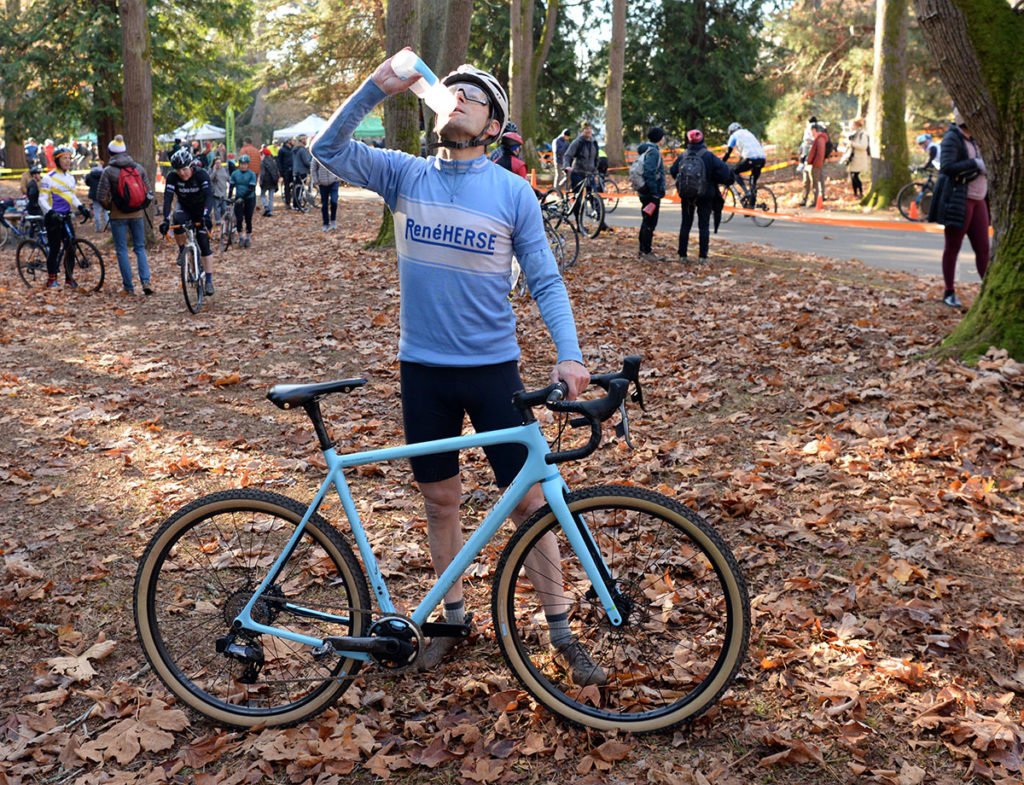
Toward the end of the race, I sensed that I was doing well, because the announcers talked about the gap to the riders behind me… It was just four seconds, so I put in an all-out effort on the last lap to open that gap a bit more. In the end, I came second behind the series leader who was about 40 seconds out in front of everybody. That’s my best result in a few years. The OPEN definitely contributed to this result. Most of all, it was fun and exhilarating to push the bike and myself to the limit for 30 minutes.
Two very different rides: A fast-paced road ride with some gravel and single-track one day, cyclocross just a few days later. Both were fun, and my new all-road bike excelled on both of them.
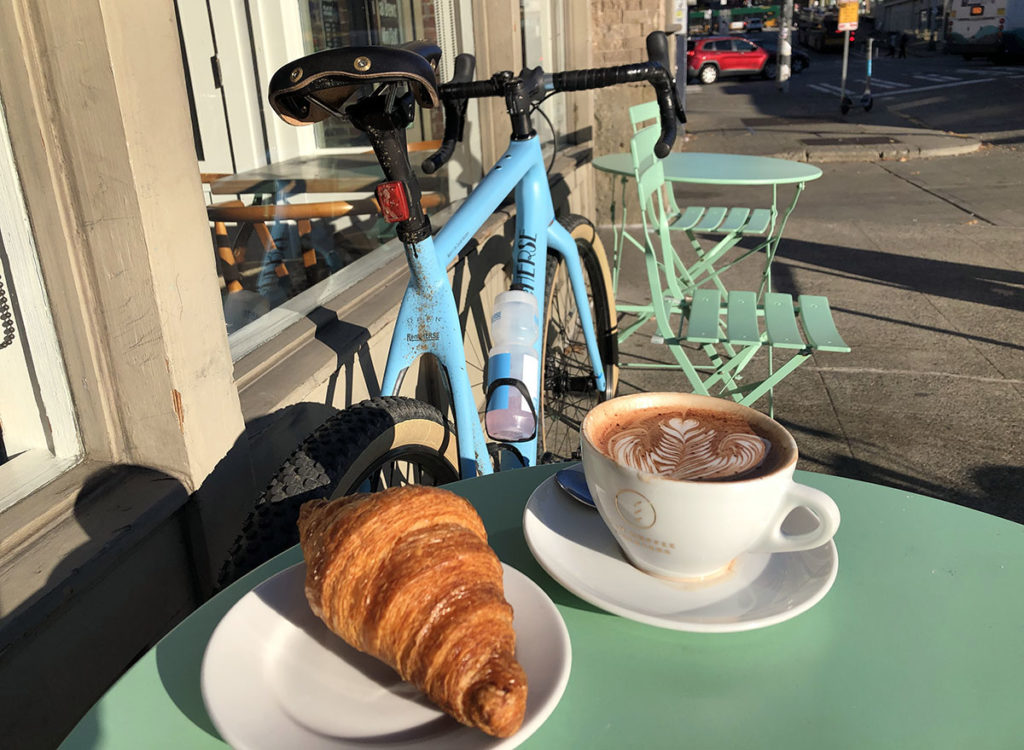
Commute with cafe stop
Just because the OPEN can go fast doesn’t mean I always push the limits. It’s just as much fun to ride at a moderate pace and stop at cafes. That’s the beauty of a great bike: It’s fun at any speed.
Further Reading:


